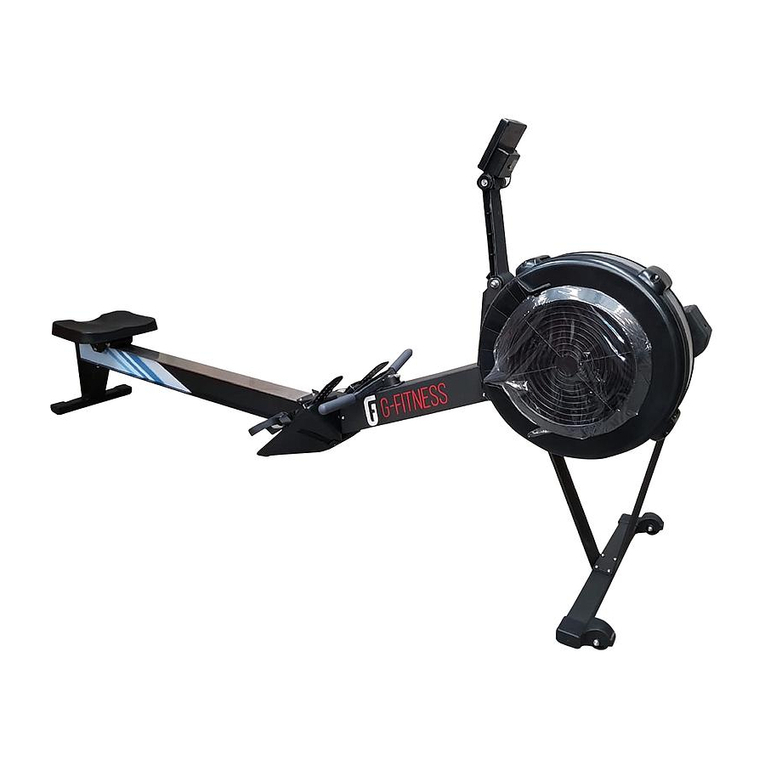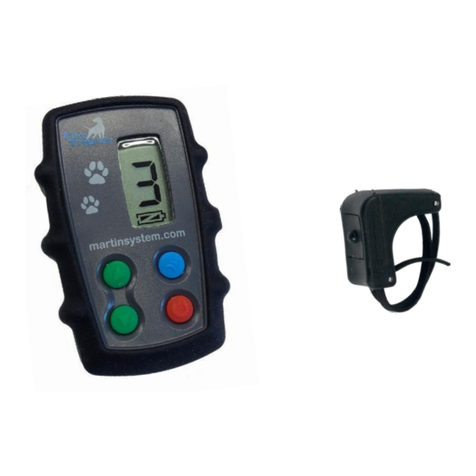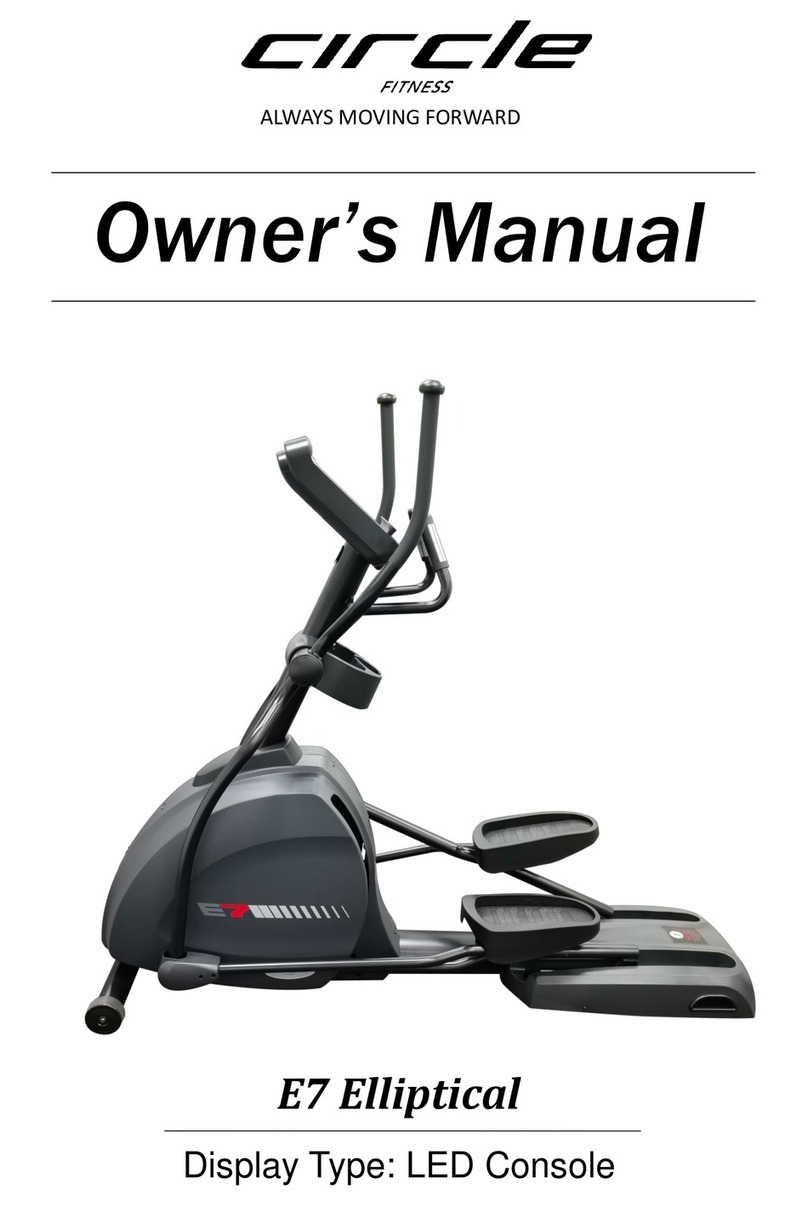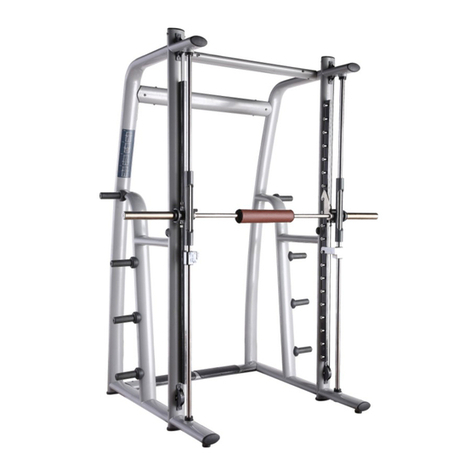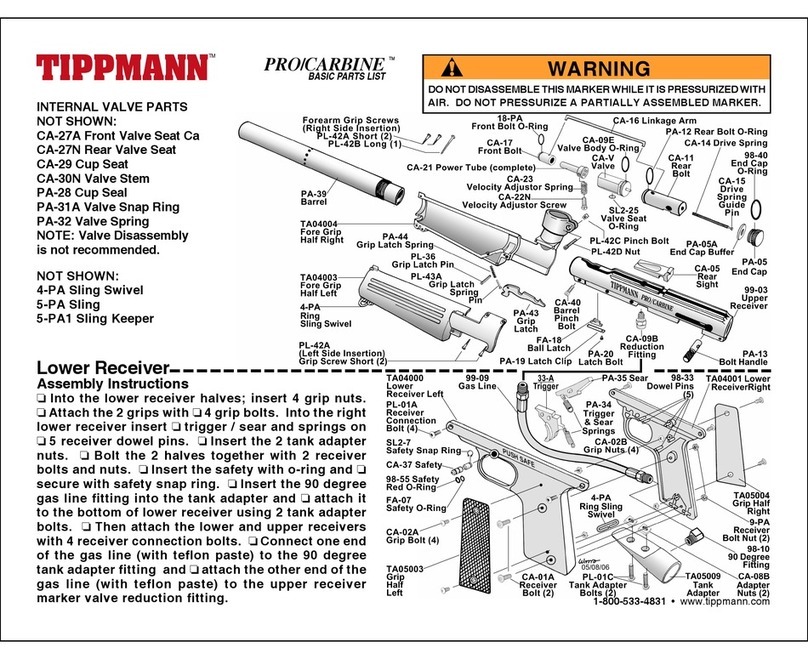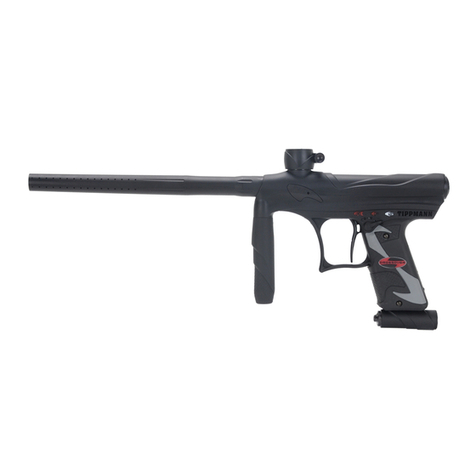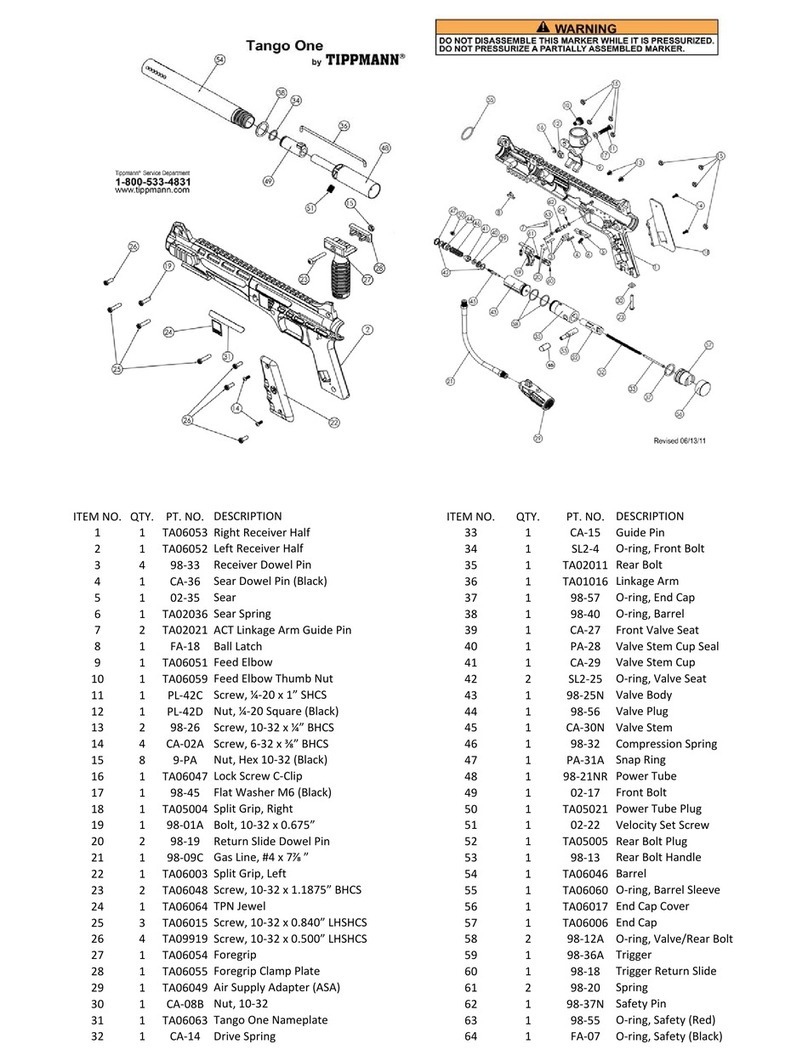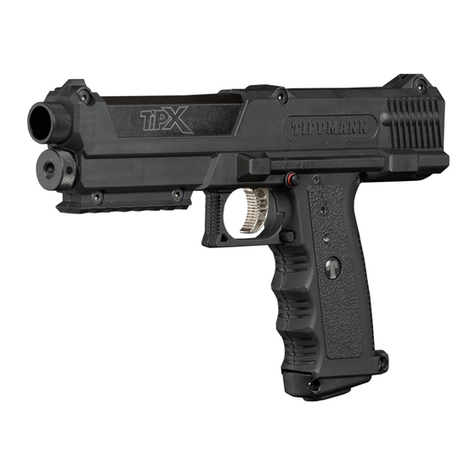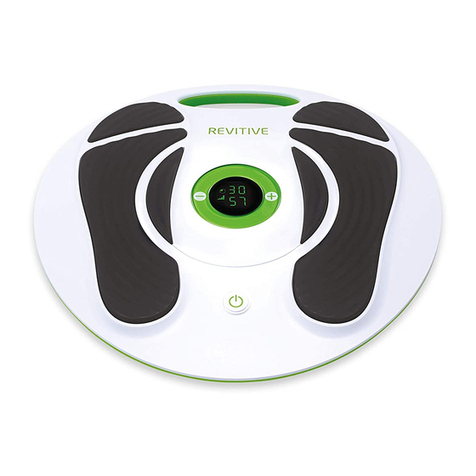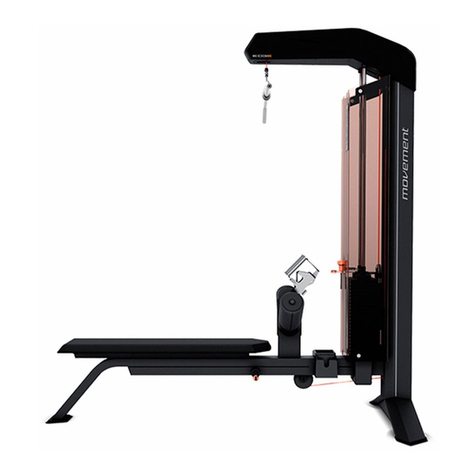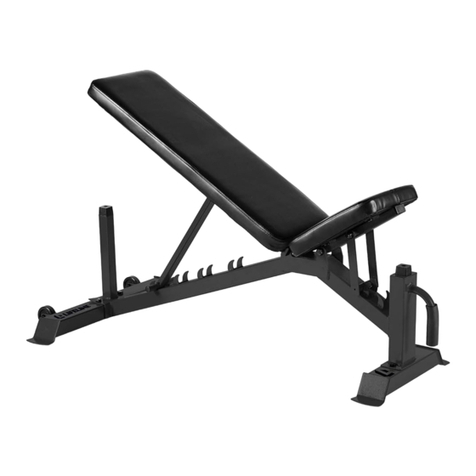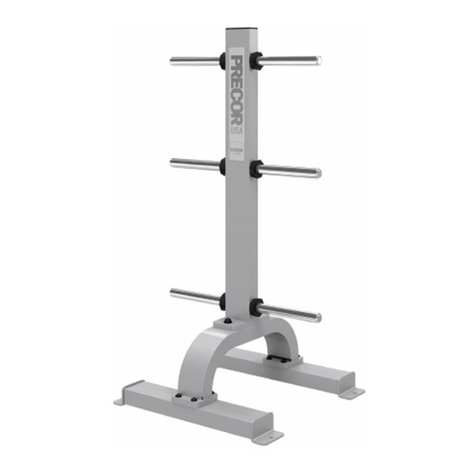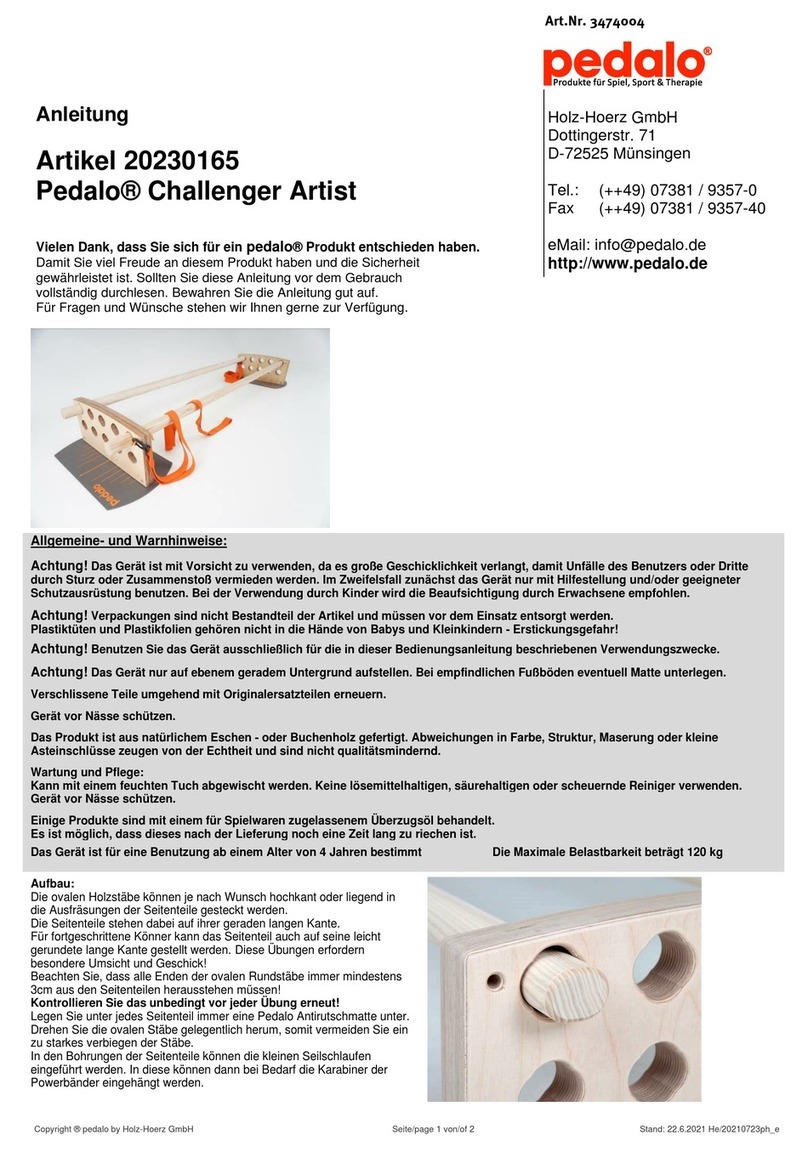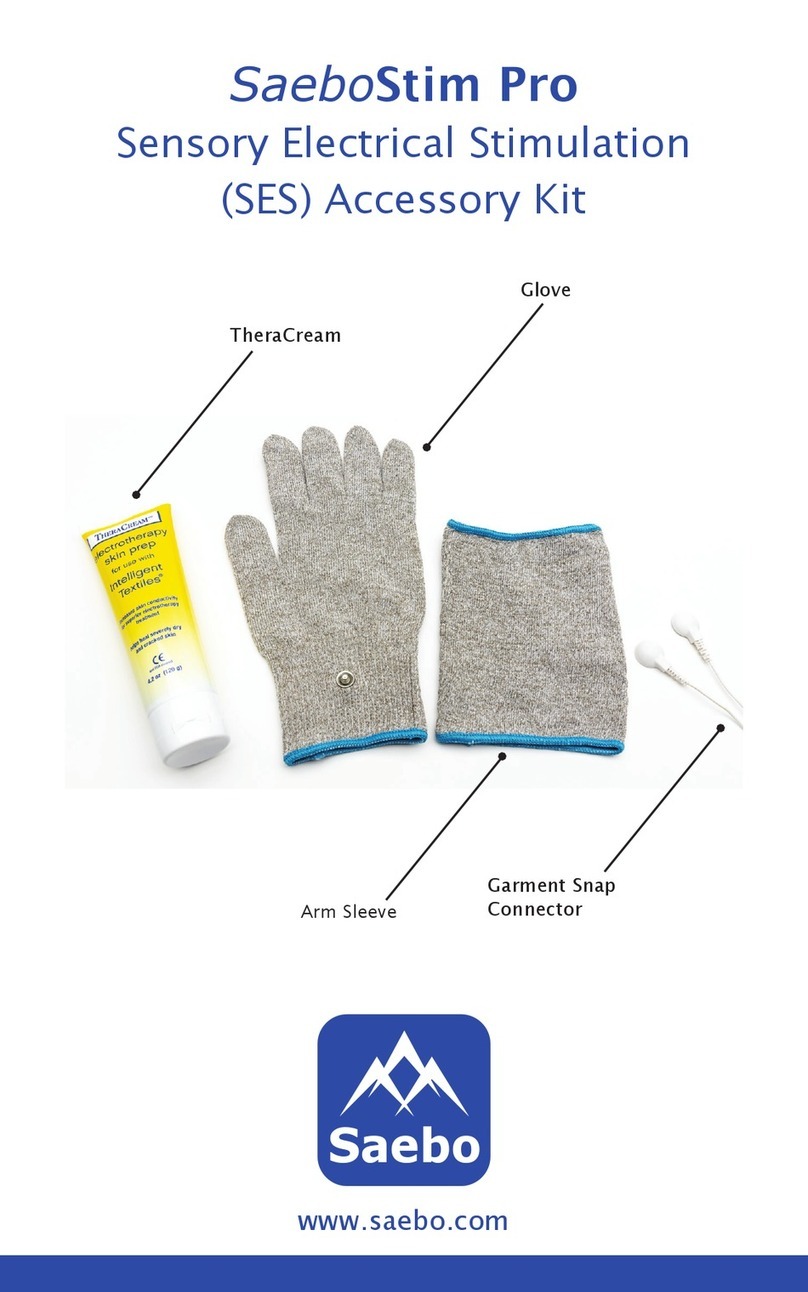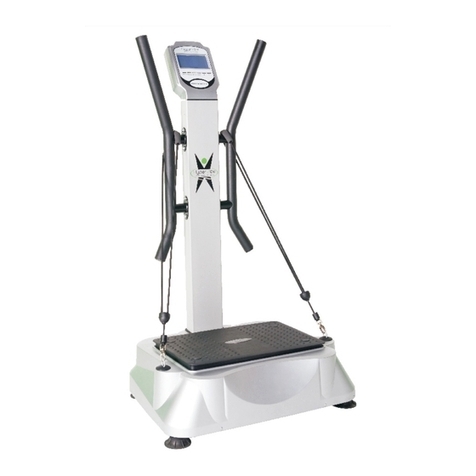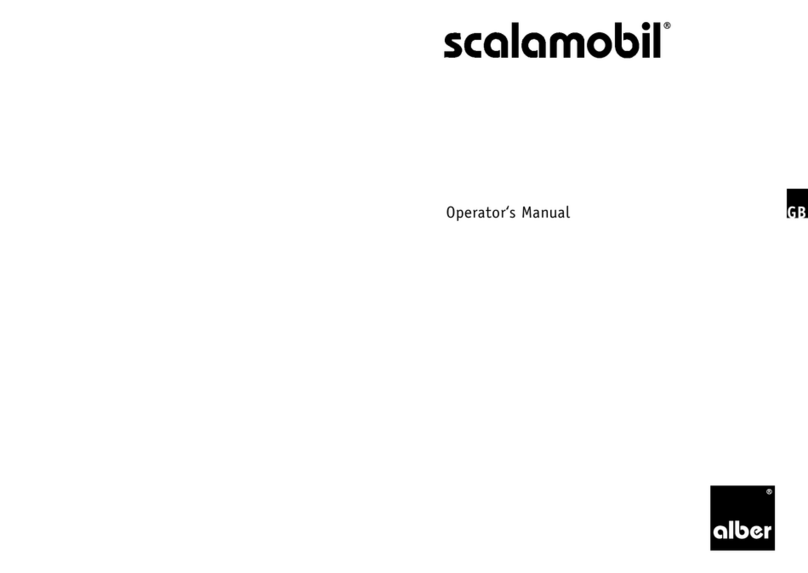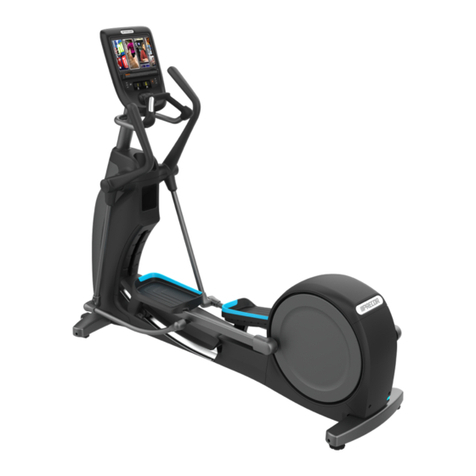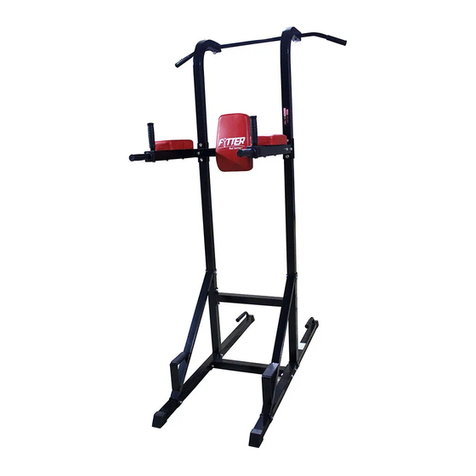10
E
N
G
L
I
S
H
Air/CO2 Cylinder Warnings
Refer to Figure 4. There have been reported incidents
caused by players unknowingly unscrewing the cylinder
(2) from the cylinder valve (1). This occurs when the player
thinks the entire valve-cylinder assembly is being unscrewed
from the air supply adaptor (ASA) of the paintball marker,
when in fact they are unscrewing the cylinder from the
cylinder valve.
To avoid this danger, it is recommended (if your cylinder is
not already marked) that you use paint or nail polish to place
a mark (3) on the cylinder valve, and place another mark (4)
on the cylinder, in line with the #3 mark as shown.
Whenever you turn the cylinder during removal, watch the
marks on the cylinder and the cylinder valve to be sure
that they rotate together. If at any time these marks start
to separate as shown in Figure 5, the cylinder is starting
to unscrew from the cylinder valve and you must STOP
and take the entire unit to a “C5” certied airsmith for safe
removal and/or repair.
NOTE: The cylinder valve should unscrew from the paintball
marker in about 3 or 4 full turns. If you nish the 4th full turn
and the cylinder valve is not unscrewed from the paintball
marker, STOP! Take the entire unit to a “C5” certied
airsmith for safe removal and/or repair.
Locate a “C5” Certied Airsmith at www.paintball-pti.com/search.asp.
Whether you have a new or used rellable air/CO2 cylinder, you are at risk if any of the
following has occurred:
• The valve unit was replaced or altered after purchase.
• An anti-siphon device was installed.
• The valve unit was removed from the cylinder for any reason.
• Any modication was done to the rellable air/CO2 cylinder.
If any of these conditions has occurred, take your air/CO2 cylinder to a “C5” Certied Airsmith
for inspection or contact the cylinder manufacturer.
Air/CO2 Cylinder Safety Tips
SAFETY TIPS to ensure that your air or CO2 cylinder is safe for play:
• Improper use, lling, storage, or disposal of air/CO2 cylinder may result in property
damage, serious personal injury or death.
• Make sure that any maintenance or modication to any air/CO2 cylinder is done by
a qualied professional, such as a “C5” certied airsmith.
• The use of anti-siphon devices is not recommended. However, if one is already
installed on your air/CO2 cylinder, or such device is desired, it is critical that your
cylinder be checked by a qualied professional, and you have the device installed
by a qualied professional.
Figure 4: Properly marked
Valve and Cylinder
12
34
Figure 5: Misaligned Valve and
Cylinder
3
4
WARNING
The brass or nickel plated cylinder valve (Figure 4, #1) is intended to be
permanently attached to the air/CO2 cylinder (2).
An air/CO2 cylinder can y off with enough force to cause serious injury
or death if the cylinder (2) unscrews from the cylinder valve (1).
